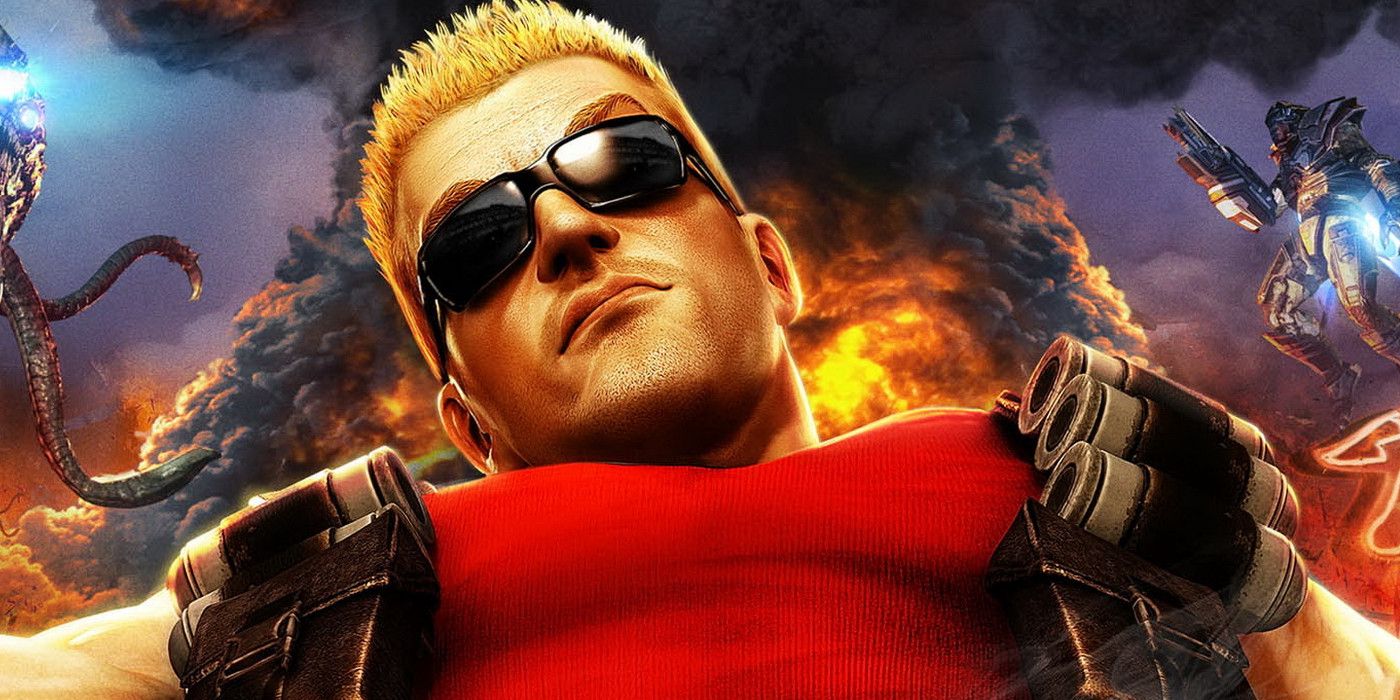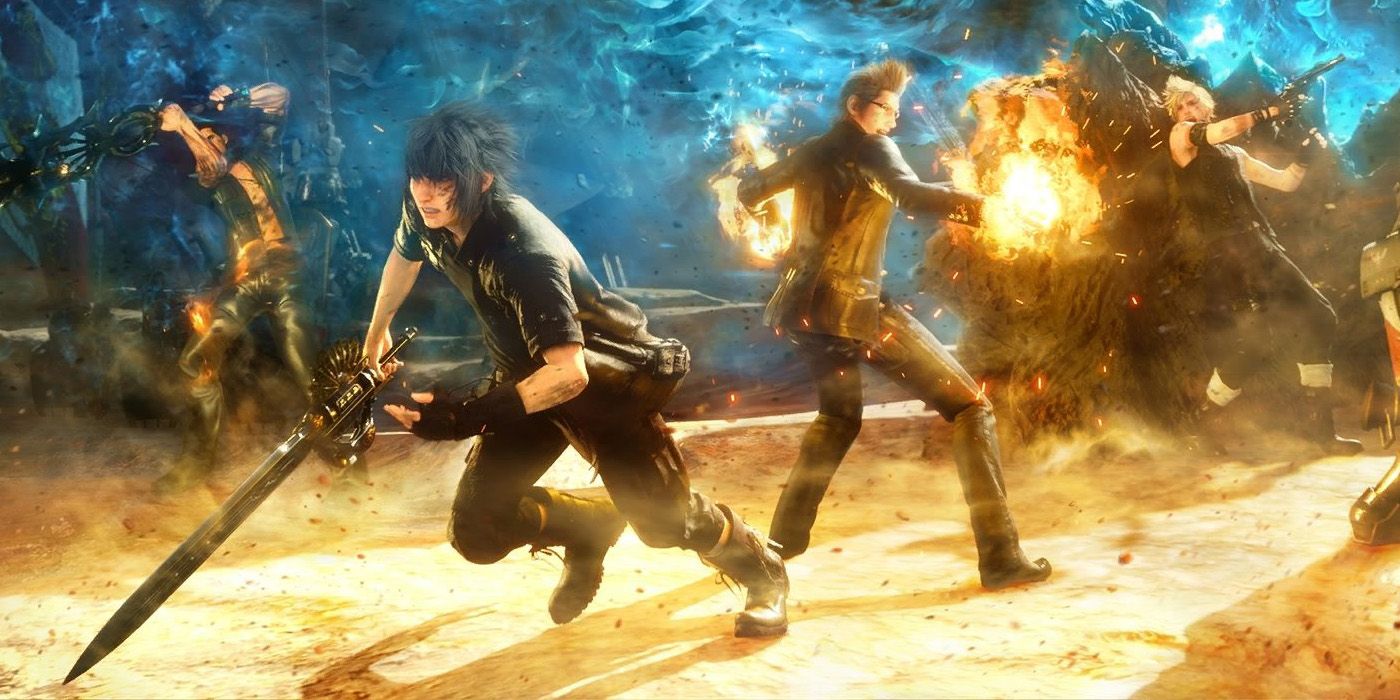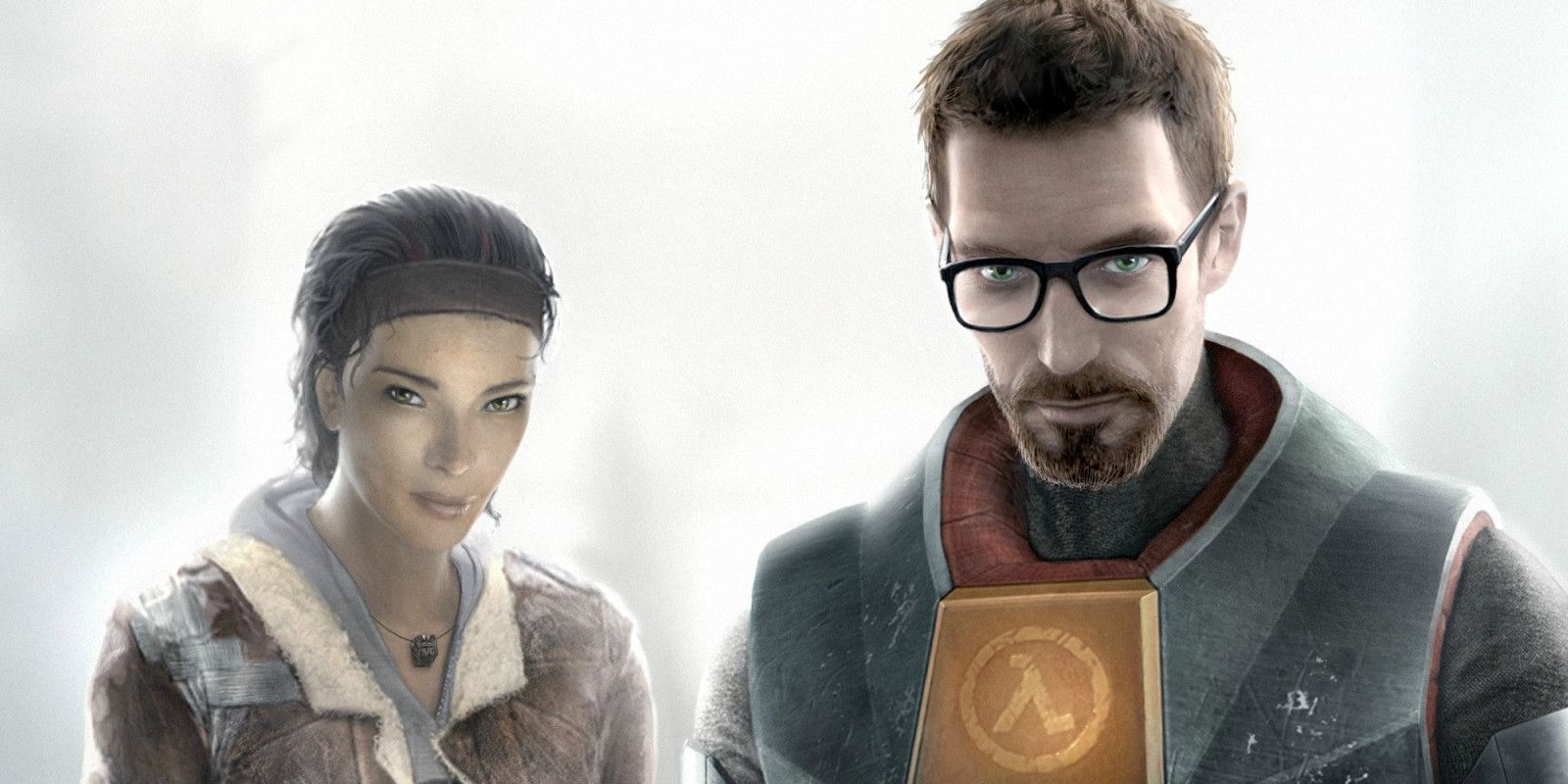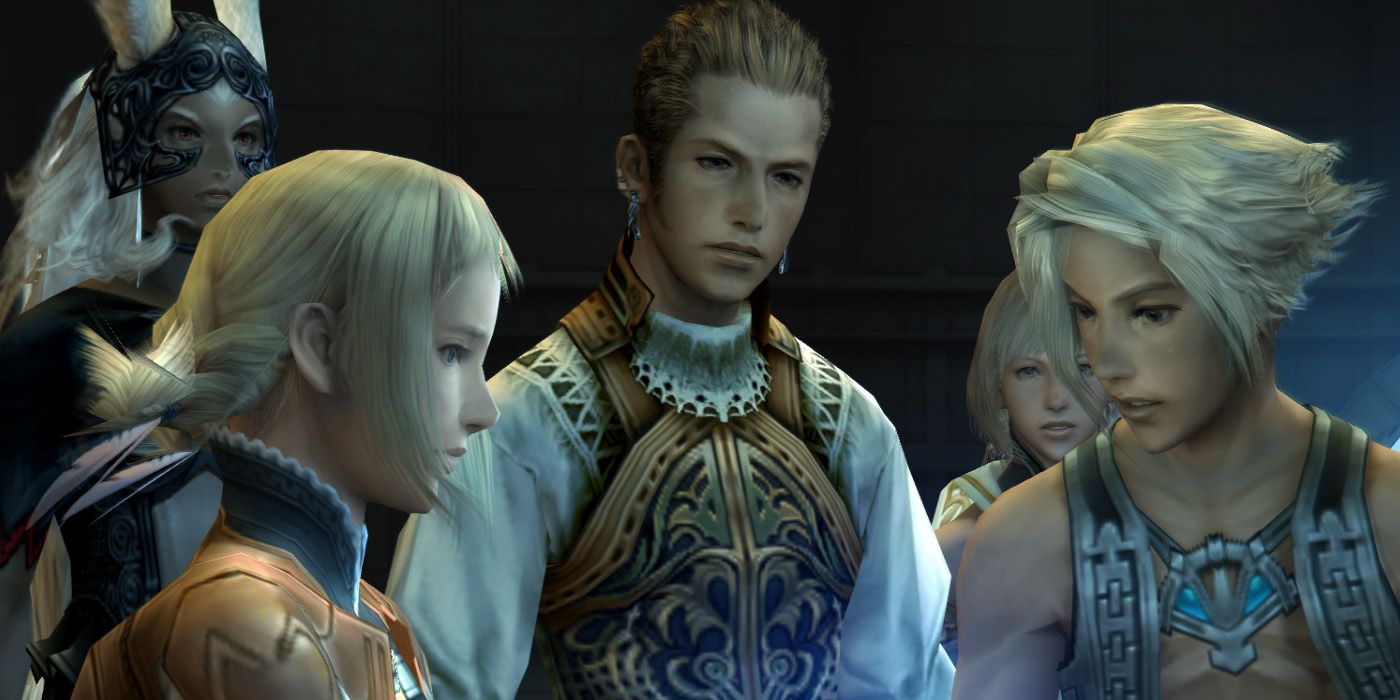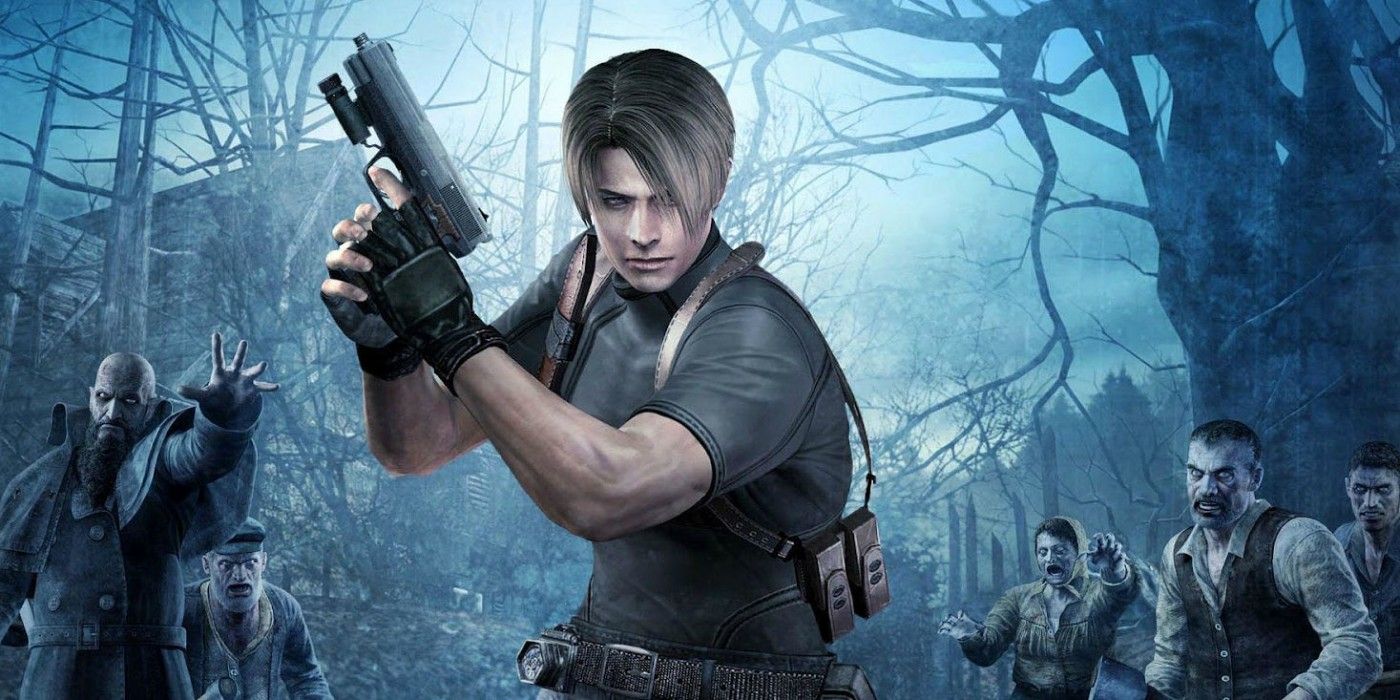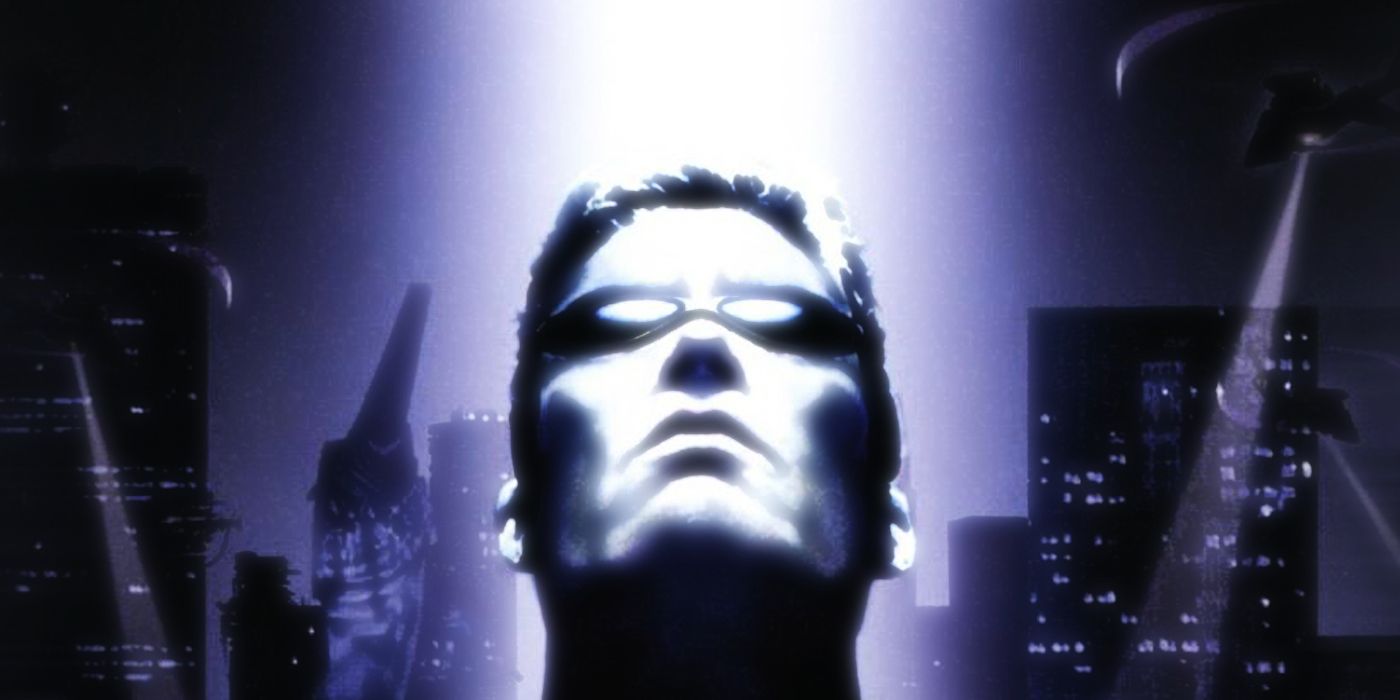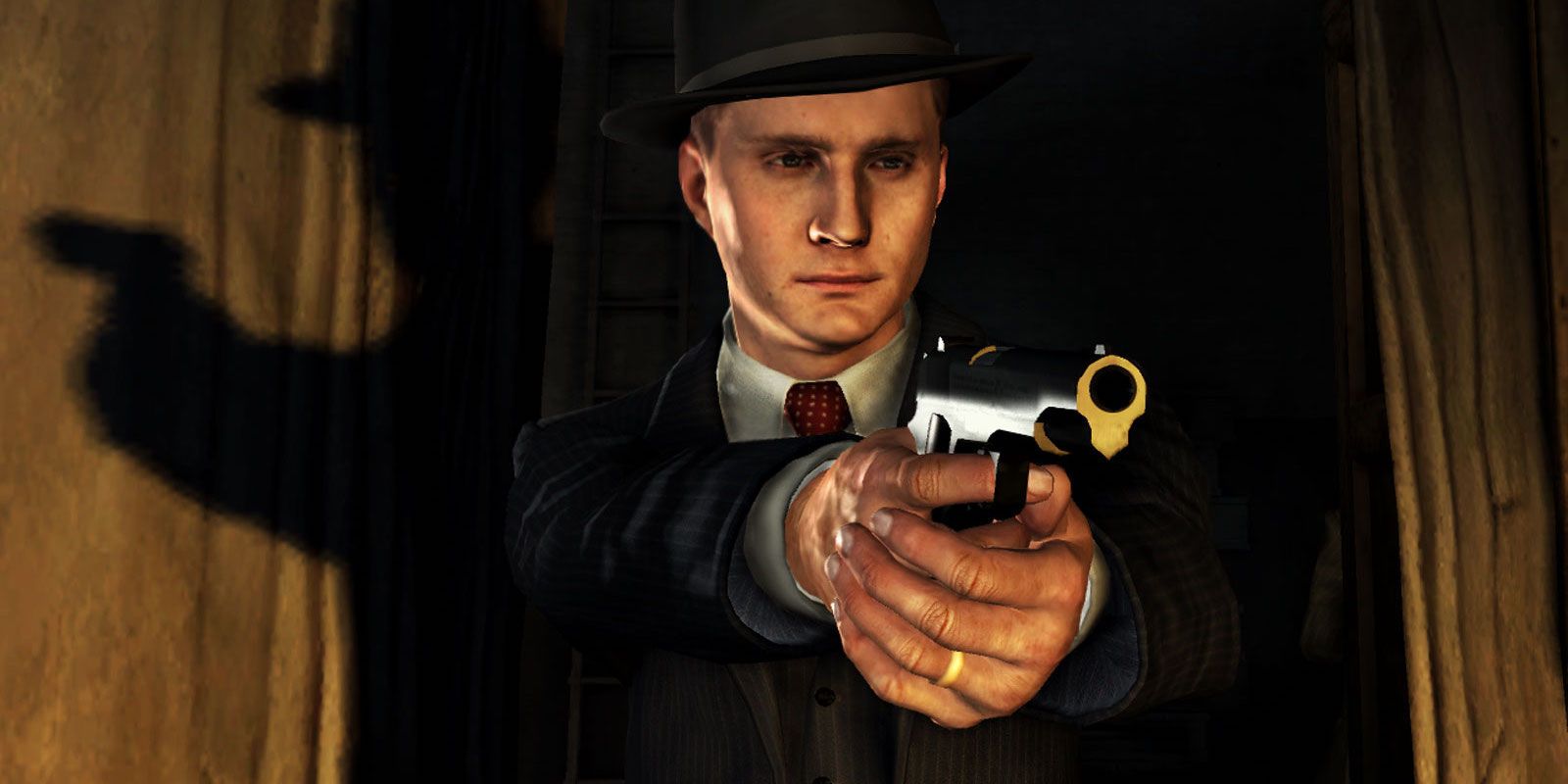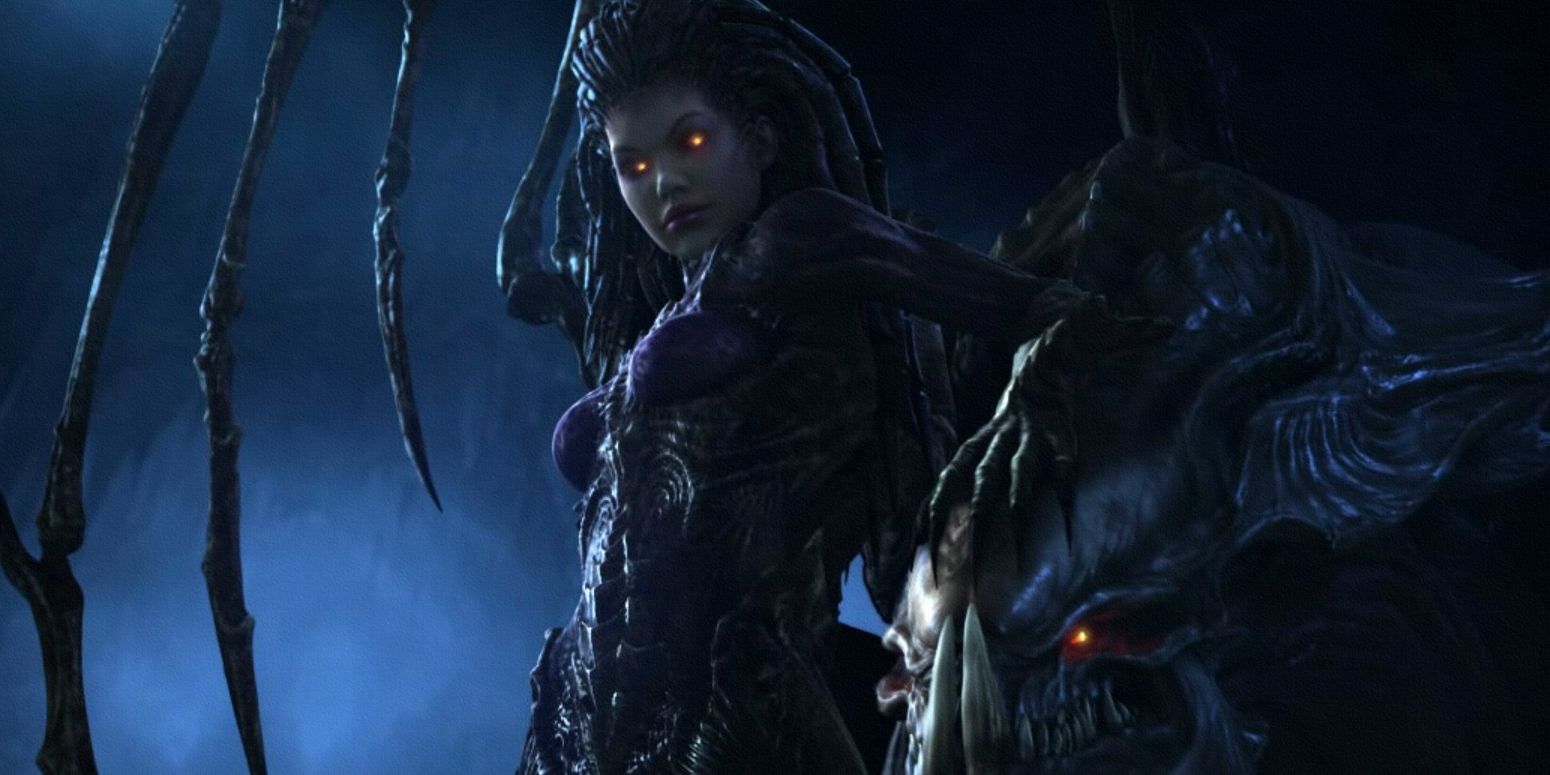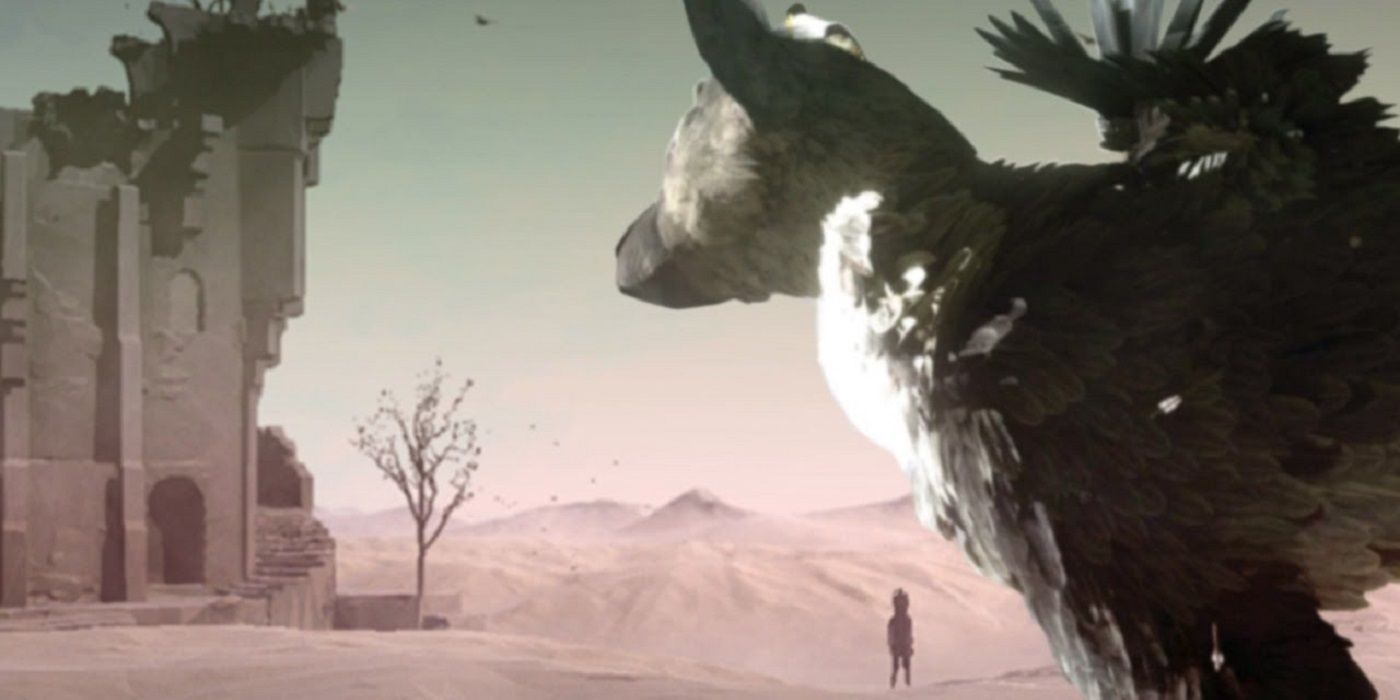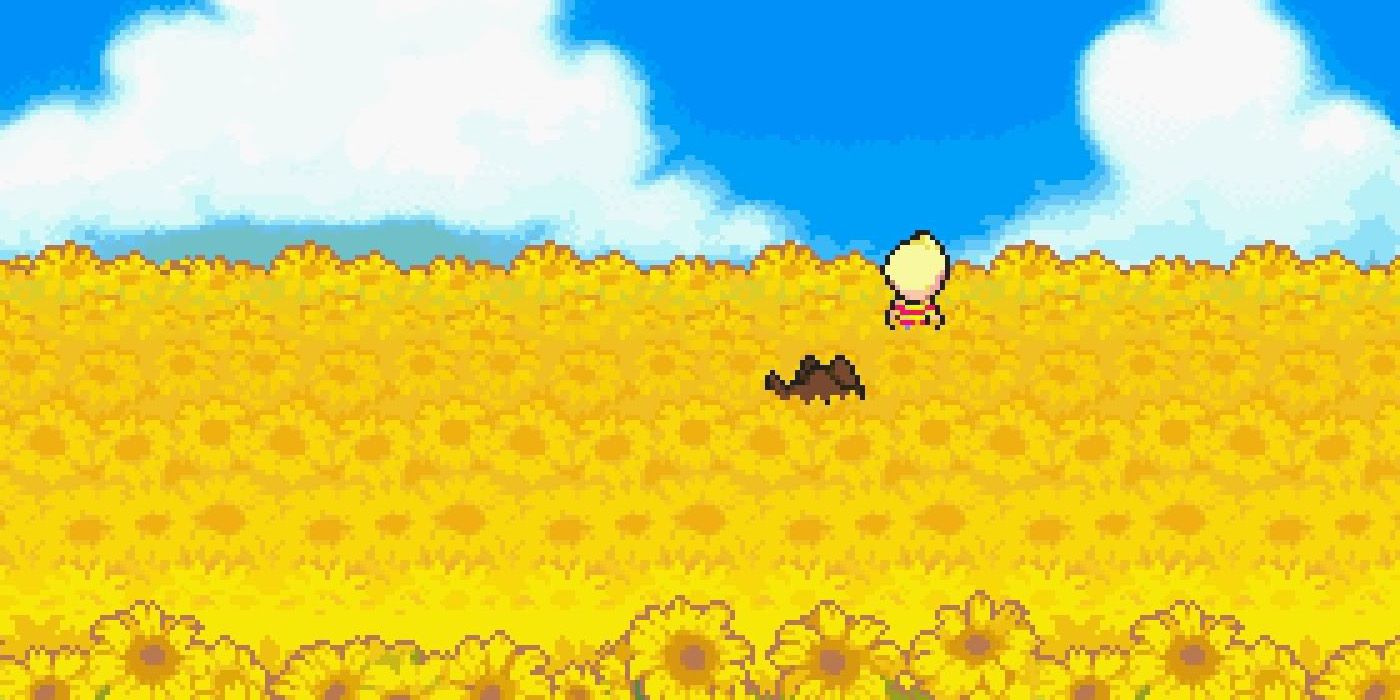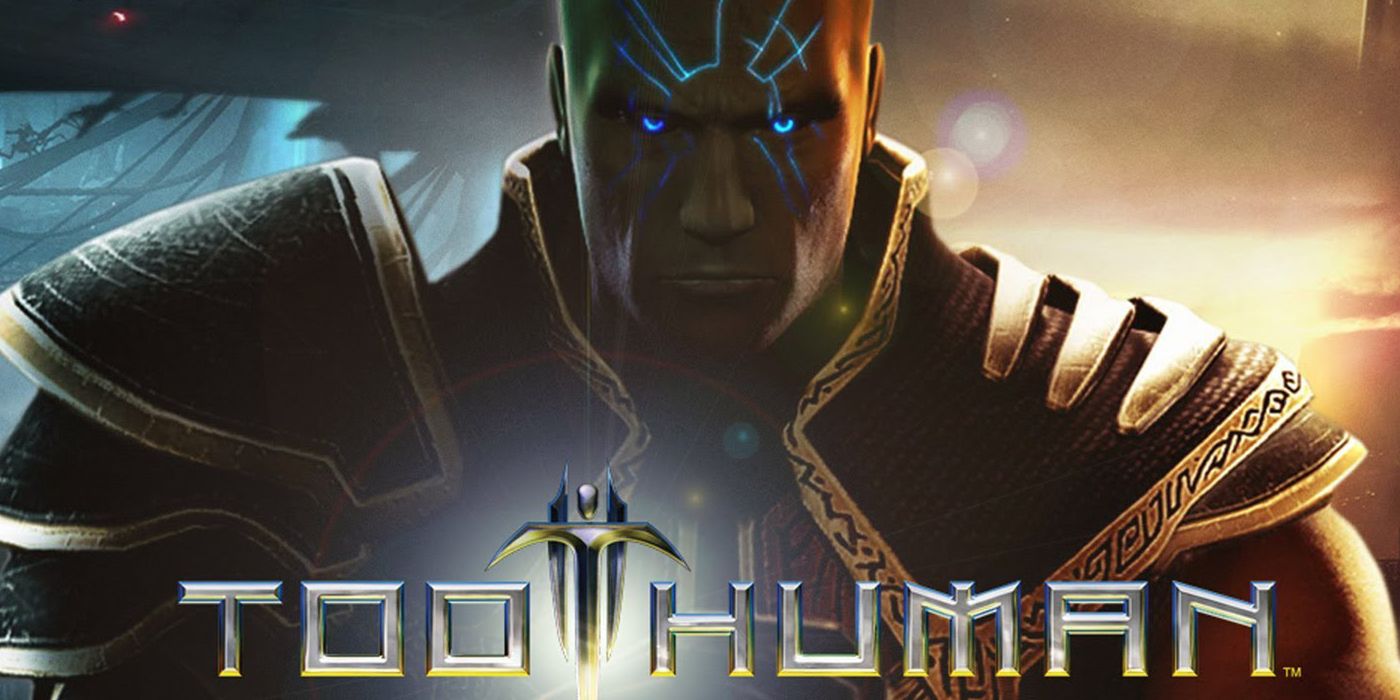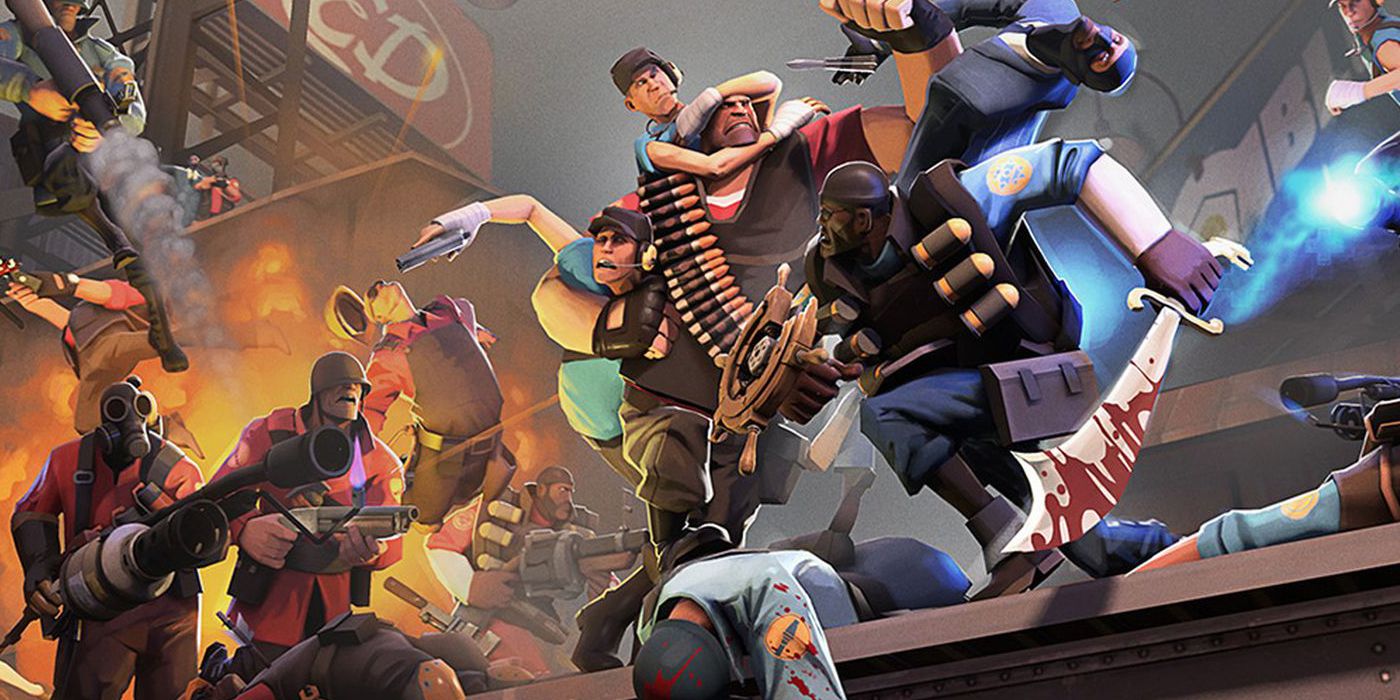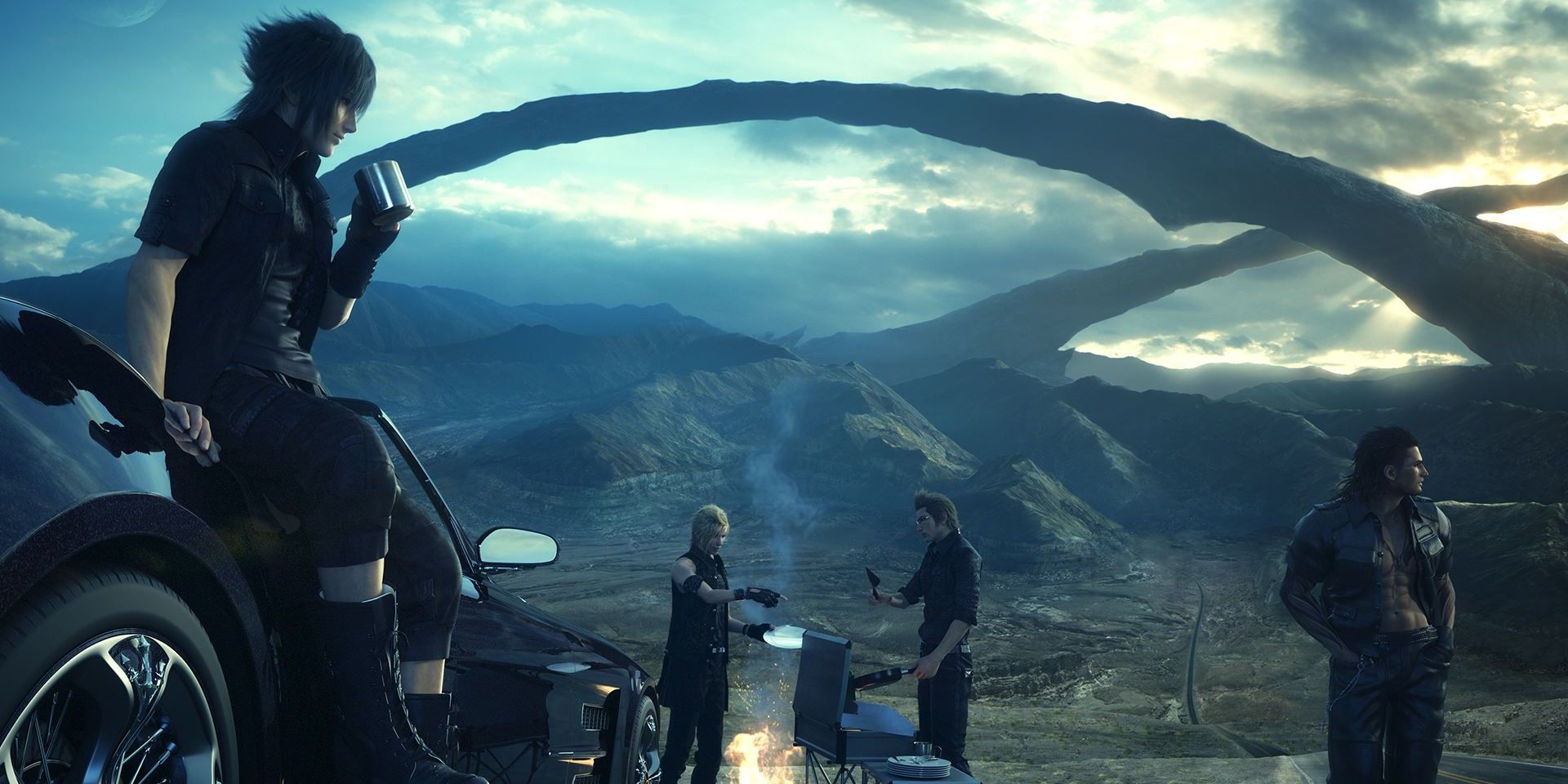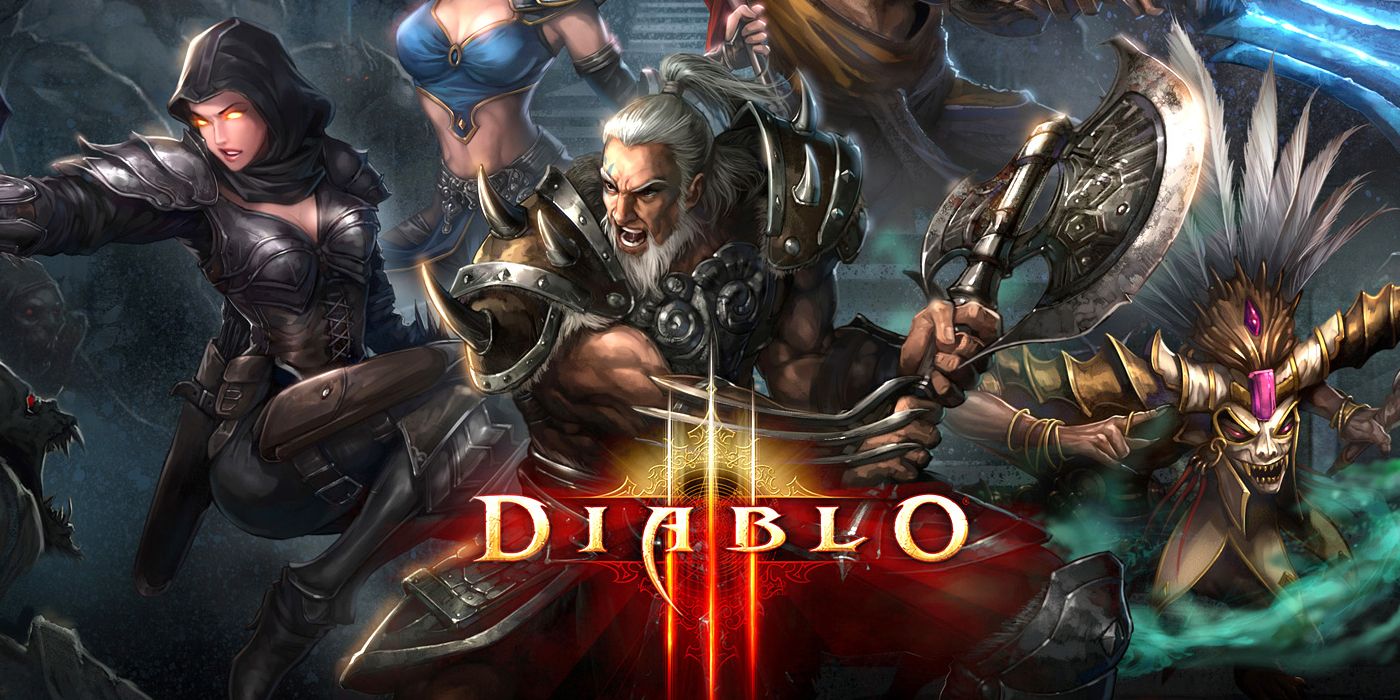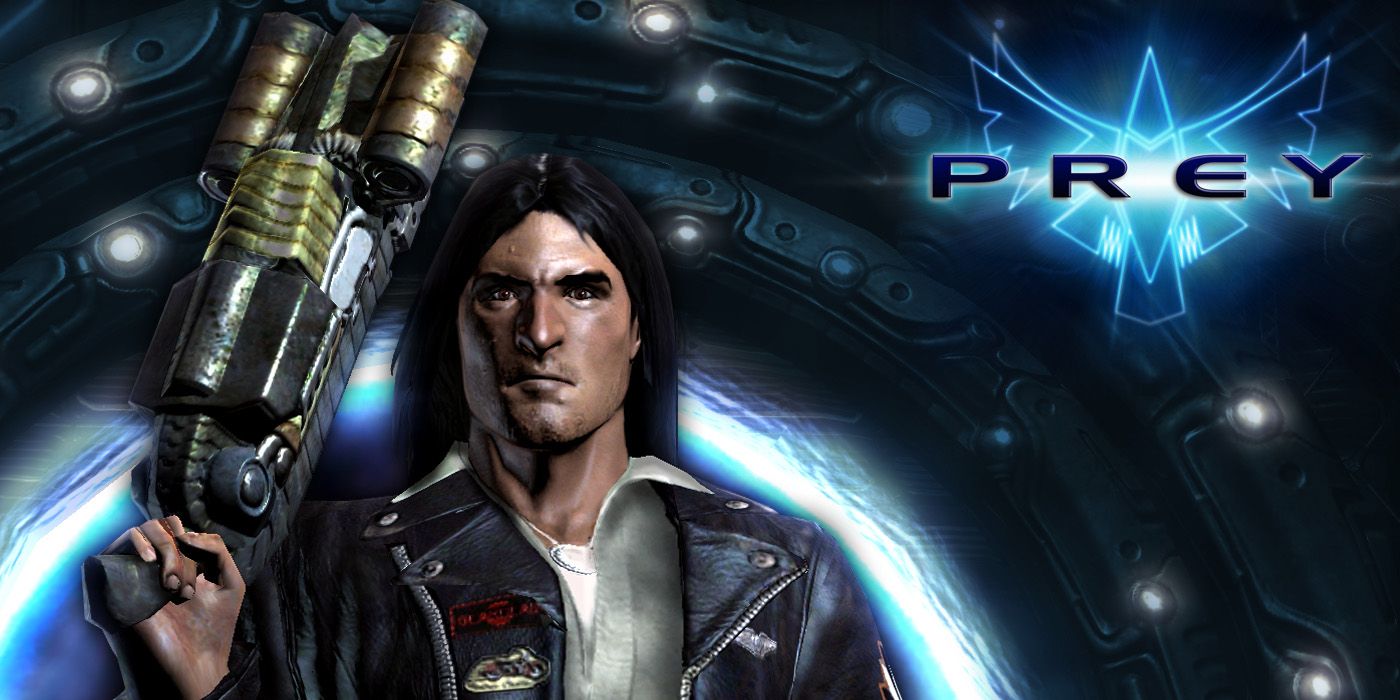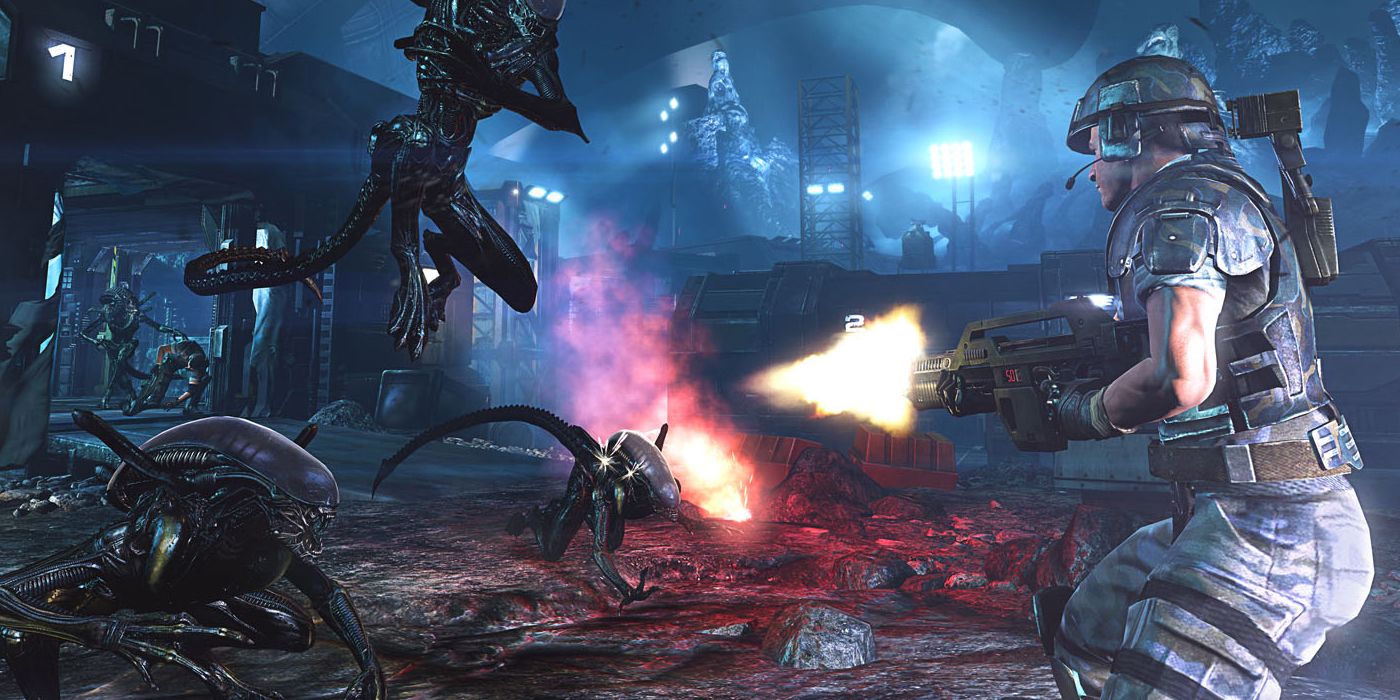The development time of video games keeps increasing year by year. This is due to how complex modern video games have become. When Shigeru Miyamoto was working on the original Super Mario Bros. back in 1985, he didn't have to worry about online multiplayer, voice acting, VR support, ratings boards, or creating a game for multiple platforms. Nowadays, a video game development team has to fulfil numerous obligations at once, while both fans and publishers are screaming at them to get it finished on time.
Some games have had terrible luck when being developed. Any number of factors can delay or kill a video game. It is because of outside interference that many games have went well over a five year development cycle. Some even took a decade to complete! We are here today to look at the games that took a break at the starting line, and waited way too long to enter our lives. From the long-awaited return of Gordon Freeman, to the dreaded reemergence of the Duke. Here are 15 Video Games That Spent Way Too Long In Development.
15. Half Life 2
Before the release of Half Life 2 in 2004, it is no exaggeration to say that it was the most anticipated PC game of all time. The original Half Life helped redefine the video game genre. Valve took the antiquated Quake engine, and created a game with skeletal animation, intelligent enemies, and interactive cutscenes that gave Half Life a cinematic quality.
Half Life 2 began production in 1999. The original plot of the game was very different to the final product, and only certain sections remained in the retail version. Originally, Gordon Freeman would launch an attack on AirEX, a facility that is replacing the breathable air in the atmosphere with a poisonous gas. He would be trapped aboard a ship that is adrift in the Arctic, before escaping on a submarine to a secret rebel base.
Valve originally gave a release date of September 30th, 2003. They kept reaffirming this date, even though numerous gaming publications & websites were reporting rumours of a delay. Valve eventually confirmed the delay... on September 23rd, 2003, a week before people were expecting to play the game. A demo was leaked by an ornery fan, and it was revealed that a lot of the E3 footage of the game was actually scripted, even though Valve claimed that it wasn't. The fan outrage eventually died down, and the game was released in November of 2004.
14. Final Fantasy XII
Final Fantasy XII is often considered to be the weakest of the PlayStation 2 instalments of the series. Final Fantasy X was a huge critical and commercial success. So much so that it was the first game in the series to get a direct sequel. While fans initially complained about Final Fantasy XI being an online game, it eventually went on to be the most profitable game in the series. Final Fantasy XII received a mixed response, both in terms of its story and gameplay. Most Western fans openly despised Vaan, the main character of the game. They did not give the rest of the story a chance because of him, out of sheer spite. The gameplay was accused of relying too much on A.I. controlled party members, with some reviews claiming that the game played itself.
Development began on Final Fantasy XII in 2000, with Yasumi Matsuno (the brains behind Final Fantasy Tactics, and Vagrant Story) acting as the game's director. Matsuno quit the project when it was still halfway through development, and left Square Enix altogether. His loss was the biggest contributor to the game's delay, and it was up to his team to pick up the pieces. It has been theorised by some fans that Yiazmat, the main Superboss of the game, is actually a shout-out to Matsuno (as the name of Yiazmat's mission is "Farewell To A Legend"). Final Fantasy XII was finally released in March of 2006.
13. Resident Evil 4
Resident Evil 4 was released in 2005 to massive critical acclaim. It is often considered to be the best game of the PlayStation 2/GameCube/Xbox era, and is one of the most beloved video games of all time. It redefined both the action and shooter genres, and revitalised the Resident Evil franchise.
It is fortunate that Resident Evil 4 was such a great game upon release. It was lucky to have been released at all, due to the numerous revisions it underwent. Development tentatively started in 1999, with the creation of a game that was more action focused than normal. Capcom decided that this game was too different from previous instalments to be a Resident Evil game, so they turned it into it's own title. That game became Devil May Cry.
There existed at least two other vastly different versions of Resident Evil 4. The first was set in a castle, and featured the return of the classic zombie enemies from the first three games. This version was scrapped, in favour of a totally different Resident Evil 4 that featured ghosts. The so-called "Hook Man" version of the game was shown at E3, and it featured Leon fighting possessed suits of armour, haunted dolls, and ghost-like monsters that could phase through walls. This version of the game was deemed to be too different from the other games in the franchise, so the Resident Evil 4 that we known and love began development.
12. Deus Ex
They say that if you mention the name of Deus Ex online, then someone in the world will reinstall it. Despite being released in the year 2000, Deus Ex is still considered to be one of the greatest PC RPGs ever made. You play as JC Denton, a secret agent who has been enhanced with cybernetics. His first mission involves dealing with the leader of a group of terrorists that have taken over the Statue of Liberty. JC Denton is soon dragged into a battle between numerous factions that want to take over the world.
The surprise success of The X-Files TV show began an interest in media that focused on government conspiracies and cover-ups. This led Warren Spector, a producer at Origin Studios, to begin work on a first person shooter that dealt with black-ops government agents. The game that would become Deus Ex started out as Troubleshooter, a game that Spector pitched to Origin Studios in 1994. They passed on the concept, and Spector left the company to join Looking Glass Technologies. John Romero (of Doom fame) offered Spector a job at Ion studios, and funded the game that he had been pitching for so long. The game underwent numerous revisions, before finally being released as Deus Ex in the year 2000.
11. L.A. Noire
With so many Grand Theft Auto games being released over the years, fans have often wondered if Rockstar would ever consider making a similar game where you played as a cop. While we have yet to see a game like that in a contemporary setting, we did get a detective drama set in the 1940s. L.A. Noire was released in 2011 to critical acclaim and commercial success. The game was notable for its extensive use of motion tracking for the animation on the character's faces. While this feature was impressive, it also bumped the game's file size up considerably (to the point where it was one of the few Xbox 360 games to be released on multiple discs).
L.A. Noire started out as a game developed by a company called Team Bondi. It began development in 2004, with the publishing rights being bought by Rockstar in 2006. From that point on, both companies worked on the game. Due to the unique method of recording facial movements (using technology called MotionScan), the game's development cost shot up. L.A. Noire is estimated to have cost over 50 million dollars to produce, making it one of the most expensive video games ever made. The game ran into numerous issues during production, partly because of the inexperience of Team Bondi, and the issues that they had working with Rockstar. The problems escalated to the point where several former Team Bondi employees started a website that listed all of the people who weren't credited for their work on the game.
10. Starcraft 2
The original StarCraft swiftly became one of the most popular strategy games of all time. Blizzard were a trailblazer in terms of creating games with exciting online elements. They also engaged with the fans directly, and encouraged the growth of a huge community that thrives to this day. StarCraft has been a feature at competitive gaming events for almost twenty years now, and still sees regular play in countries like South Korea (where it has practically become a national sport).
Blizzard are known for taking their time with sequels. Development on StarCraft II: Wings of Liberty began shortly after the release of the final WarCraft III expansion in 2003. It was during the creation of StarCraft II that World of Warcraft was released. Blizzard shifted its focus to working on World of Warcraft, due to its ever-growing fanbase (and the cash they were pouring into the game).
StarCraft II was announced in 2007. Blizzard promised a beta test for the game in 2009, but ultimately had to cancel those plans, and pushed it back to 2010. StarCraft II: Wings of Liberty was finally released in 2010, or rather, a third of it was. The game only had one single player campaign (for the Terran race), with the other two campaigns being released later as expansion packs.
9. The Last Guardian
This one is kind of a cheat, as the game actually hasn't been released yet. The Last Guardian is due to be released in roughly one week (as of time of writing). The chances of Team Ico delaying it now are low (but not out of the question, as Valve did it with Half Life 2).
The Last Guardian is the third chapter in a loose trilogy of games, along with Ico and Shadow of the Colossus. You play as a young boy, who must guide a giant Griffon through various levels. Fans have been eagerly awaiting this game since it was first announced in 2009 (though it began development two years earlier). The Last Guardian was originally supposed to be a PlayStation 3 exclusive, but production went on for so long that it was moved to the PlayStation 4.
Fans were not sure if The Last Guardian was ever going to be released. The shift from one console to another was not revealed to the public until 2015. All new information about the game stopped being made, and both Sony and Team Ico went silent on the matter of it's status. While no official cancellation was given, the lack of updates led many news outlets to speculate that the game had entered a permanent hiatus. The PlayStation 4 version of The Last Guardian was officially announced at the start of Sony's 2015 E3 press conference.
8. Mother 3
Mother 3 was a game that died, and was brought back to life.
The Nintendo 64 was planned to have an add-on called the 64DD (which stood for Disk Drive). This was a peripheral that connected to the Nintendo 64, and allowed games to be run on disk with a high memory capacity. The 64DD was released in Japan to a lukewarm reception. Support for the add-on quickly dried up, and a planned Western release for the 64DD never came to pass.
One of the games planned for the 64DD was Mother 3, also known as Earthbound 64. This game was going to be a sequel to the cult classic RPG called Mother 2 (known as Earthbound in America). Due to the development team being new to 3D graphics, progress on the game moved slowly. Mother 3 began development in 1994, but due to the issues with having to move the game from the 64DD to a regular Nintendo 64 cartridge, it was continually delayed. Mother 3 was officially cancelled in the year 2000.
This was not the end for Mother 3. The game was announced as returning, but as a Game Boy Advance title. After three years of development, the new Mother 3 was released in Japan. The game has yet to see an official release outside of Japan, but an English fan translation exists.
7. Too Human
While it sucks when a game is delayed, it ultimately doesn't matter so long as it's good. This is true for most of the games on this list. It is a shame that a lot of fans don't see it that way, as they will be the first to viciously complain when a delay is announced. The creator of No Man's Sky received death threats when he announced a two month delay of the game. The same is true for journalists who report rumours of a delay, as was the case with Final Fantasy XV being delayed by two months.
Too Human spent nine years in development, and it wasn't worth the wait.
Originally announced for the PlayStation in 1999, Too Human was an action game that was being developed by Silicon Knights. Early footage of the game was shown at the 1999 E3 press conference. The game was then ported to the Nintendo GameCube, after Silicon Knights struck a deal to create games exclusively for Nintendo consoles. Progress on the game was halted, as Silicon Knights began work on Eternal Darkness: Sanity's Requiem. After the deal with Nintendo ended, Silicon Knights cut a deal with Microsoft, and moved development of Too Human onto the Xbox 360. This port of the game was announced in 2005, but the final product would not be released until 2008. Too Human was released to a lukewarm reception, and did not make back its estimated 100 million dollar production cost.
6. Team Fortress 2
As mentioned above, a version of Half Life 2 was leaked following the announcement of its 2003 delay. As fans poured over the code for the game, they found elements for other titles that had yet to be announced. In the Half Life 2 leak, they found information pertaining to Counter Strike: Source, and Team Fortress 2.
The original Team Fortress actually started out as a mod for Quake. The game provided team based multiplayer, with players being able to choose from different characters, who each possessed unique abilities. Valve were so impressed with the mod that they hired its three creators to make a version of Team Fortress for Half Life. Footage of a sequel was shown at E3 1999, which showed a realistic aesthetic for the soldiers.
Valve delayed Team Fortress 2 in the year 2000 for an indefinite period of time. This was due to the massive amount of work that was going into the Source Engine, Half Life 2, and Steam. Nothing was said about Team Fortress 2 until 2004, when it was confirmed to still be in development. The game was finally released in 2007, in a form that was completely different from the original design of the game.
5. Final Fantasy XV
Square Enix once had big plans for a franchise called Fabula Nova Crystallis Final Fantasy. It was intended to be composed of games that were linked by certain themes and concepts. The first game to be released from this franchise was Final Fantasy XIII. The game was not as well-received as other Final Fantasy titles, so Square Enix started to back away from the idea of creating a larger franchise around it. There were two other games planned to be part of the Fabula Nova Crystallis Final Fantasy series, and they changed greatly over time. The first was Final Fantasy Agito XIII, which eventually became Final Fantasy Type-0. This game was released in Japan on the PlayStation Portable in 2009. Despite being a Final Fantasy game, we would not see a Western release of Type-0 until it received a HD remaster for the PlayStation 4 and Xbox One in 2015.
The other Fabula Nova Crystallis Final Fantasy game was Final Fantasy Versus XIII. It was first revealed at E3 2006, and was going to be a PlayStation 3 exclusive title. The game suffered a long development, as resources were used on other Square Enix games that were released in the following years instead (like the sequels to Final Fantasy XIII, and Final Fantasy XIV for example). Very little news of the game was released until 2013, when it was officially changed into Final Fantasy XV, and was moved over to the PlayStation 4 and Xbox One. The game would see a further three years in development, with Square Enix giving regular updates as to its progress. A huge event was held in March of 2016 to announce the release date of the game. It was revealed to be coming out on September 30th... a date they later had to back out of, due to significant work still being required. After a decade of waiting, Final Fantasy XV was released on November 29th, 2016.
4. Diablo III
Battle.net is the official online platform used by Blizzard. While it was originally created for Diablo, it was the sequel to that game that made Blizzard the number one developer for online gaming. At the time of its release, Diablo II was the fastest selling video game of all time. It improved on almost everything from the first game, and had way more replayability. The online co-op mode of Diablo II was what made the game popular, with millions of people playing it at the same time. It was the success of this mode that led to Blizzard envisioning a wholly online gaming experience, leading to the birth of World of Warcraft.
Development on Diablo III began in 2001, though the earliest versions of the game did not resemble the final product. Blizzard did not officially reveal the game until 2008 (despite numerous rumours confirming its production). After an extensive period of beta testing, the PC version of Diablo III was released on May 15th, 2012. To those who actually bought the game on release day, the wait would go on a little longer. The Battle.net severs were not prepared for the beating they took from so many new players coming online at once. This was exacerbated by the fact that the game could only be played when it was connected to the servers. This mean that players could not even play the single player campaign upon release.
3. Prey
Blizzard might take a long time developing games, but the final product is usually worth it. 3D Realms have a reputation of taking over a decade to make games, yet there is no guarantee of high quality at the end.
3D Realms began development on a game called Prey in 1995. The game involved a native american warrior battling aliens with the aid of a portals. These portals were actually a huge problem for the game, as the technology did not exist in the '90s to use them efficiently as a gameplay mechanic. A version of the game that used portals was being developed in 1997. It's a shame that this version of the game never saw the light of the day, as Valve would pioneer use the mechanic in their massively successful Portal series. A new version of Prey on modern hardware began development in 2001, although the game would not be released until 2006.
Despite Prey's lengthy production schedule, it sold enough copies to be financially successful. A sequel was planned for release at one point, as Bethesda purchased the rights to the franchise. Prey 2 was announced, and then cancelled, in favour of a reboot of the franchise that is due to be released in 2017.
2. Aliens: Colonial Marines
If there was ever a movie that was made to be adapted into a first person shooter, it's Aliens. Anyone could make an entertaining game out of a group of marines that are trapped in a space station, and are being attacked from all sides by hordes of monstrous Xenomorphs.
Well... anyone but Gearbox Software can. There have been numerous excellent first person shooters released over the years that have starred the Xenomorphs. It took Gearbox's incompetence to mess up one of the easiest concepts in gaming.
Sega bought the rights to create licenced games based on the Alien franchise in 2006, and they hired Gearbox to make a game that used it. Aliens: Colonial Marines was officially announced in 2008. The game was in development for five years, with delays being announced as often as any actual news of the game. Sega actually cancelled the game at one point, due to Gearbox taking people off the game to work on Borderlands, but still taking payments from Sega as if they were still working on Colonial Marines.
Aliens: Colonial Marines was finally released in 2013. It saw scathing reviews, with complaints made about the abundance of bugs, issues with the A.I., and the fact that you spend a large portion of the game fighting human mercenaries instead of Xenomorphs.
1. Duke Nukem Forever
Duke Nukem 3D was one of the earliest games in the first person shooter genre. It was a huge commercial and critical success, and was considered by many to be the rival to Doom. While id Software continued to release numerous games and expansions for the Doom franchise, 3D Realms took their sweet time coming up with a Duke Nukem sequel. Duke Nukem Forever was announced in 1997, just as many of the teens who would be interested in the game upon its release were being conceived.
Development on Duke Nukem Forever began in 1996. 3D Realms actually bought the licence to the Quake II engine from their rivals, id Software, for an undisclosed (but likely sky high) price. One of the biggest factors in delaying the game was the numerous engine shifts. After two years of being developed on the Quake II engine, Duke Nukem Forever was moved to the Unreal engine. It was later moved to a custom-built engine, that promised to have greater physics effects than Half Life 2's Source engine.
The creators of Duke Nukem spent an estimated 20 million dollars of their own money on the game. After refusing an offer made by Take-Two Interactive to fund the game, almost all of the Duke Nukem Forever staff were laid off. The only reason the game was ever released was because Gearbox Software funded the game. Gearbox's CEO was a huge fan of the series, and he personally ensured its release.
Duke Nukem Forever was finally released for PC, Xbox 360, and PlayStation 3 in 2011. The game received mainly negative reviews upon release, and was generally considered to not live up to fifteen years of hype.

